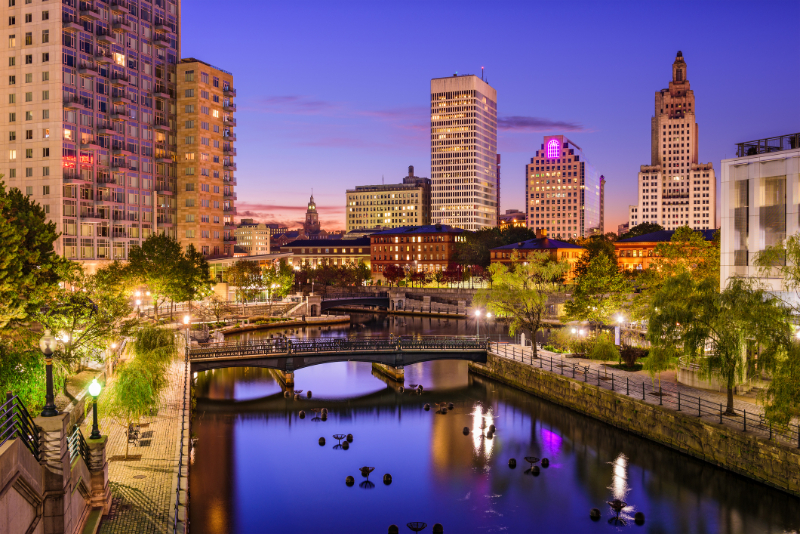
Providence, RI
The city of Providence was founded in 1636 by the Reformed Baptist theologian Roger Williams who had been forced to flee the Massachusetts Bay Colony because of religious persecution. He bought land from the Narragansett Indians and called his new home “Providence” with a goal of religious and political freedom for his followers. Easily accessible by water, Providence quickly became a busy and successful trading seaport, as it is located at the mouth of the Providence River and at the head of the Narragansett Bay. Following the Revolutionary War, Providence’s economy shifted away from maritime endeavors, becoming one the first cities to industrialize and its economy turned toward manufacturing; specifically, jewelry, tools and silverware and textile making. By the early part of the 20th century, Providence was home to some of the largest manufacturing plants in the country and became one of the largest industrial manufacturing centers. The city’s industries and job opportunities attracted many immigrants from Ireland, Germany, Sweden, England, Italy, Portugal, Cape Verde, and French Canada thus creating a city full of immigrants.
The New England Hurricane of 1938 caused catastrophic damage to downtown Providence, flooding the downtown and destroying many of the mills and factories, some were never able to recover. Between the 1940’s – 1970’s, Providence’s population began to decline with many of the cities’ middle class moving out to the suburbs, leaving behind the poor and elderly. From the 1950’s- 1980’s the city was notoriously overrun with organized crime.
In the 1980’s and 1990’s vast amounts of local and national development funds were invested in Providence for various revitalization projects. Among some of the most notable projects, the development of the Downtown Riverwalk, the creation of Water Place Park, the construction of the Providence Place Mall and the Downtown Ice Arena. By the mid to late 1980’s, Providence’s declining population began to grow again.
Today, the capital city of Providence is the most populous city in RI with a population of approximately 190,000 and 20 square miles. It is home to eight institutions of higher learning, including the internationally recognized Ivy League Brown University, the nation’s 7th oldest institution founded in 1786, as well as eight hospitals which has shifted the city’s economy and focus into more health service industries, although it has still managed to retain some of its original manufacturing history. Providence has undergone a complete transformation over the past 40 years with a thriving arts community, vibrant and diverse neighborhoods, great hotels and a world-renowned restaurant scene. Providence provides the charm of a small town but offers the sophistication of a big city.
Providence has 25 official neighborhoods, but often they can be grouped together into 5 distinct areas.
- The East Side (not to be confused with the nearby city of East Providence) consists of the neighborhoods of Hope (aka Summit), Mount Hope, Blackstone, College Hill, Wayland and Fox Point.
- The Jewelry District includes the area enclosed by I-95, the old I-195, and the Providence River. The city has recently made efforts to rename this area the Knowledge District to reflect the area’s newly developing life sciences and technology-based buildings in the neighborhood.
- The North End is formed by the concatenation of the neighborhoods of Charles, Wanskuck, Smith Hill, Elmhurst and Mount Pleasant.
- The South Side (or South Providence) consists of the neighborhoods of Elmwood, Lower South Providence, Upper South Providence, Washington Park and the West End.
- West Broadway overlaps with the southern half of Federal Hill and the northern part of the West End.
Sorry we are experiencing system issues. Please try again.
